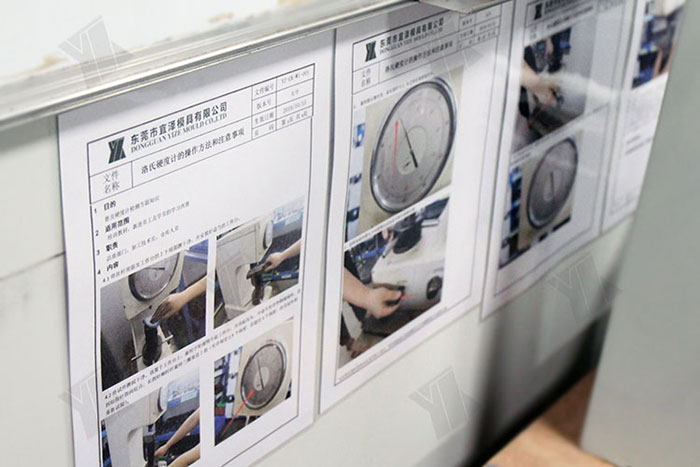Tungsten carbide hardness vs diamond vs other high hardness materials
The hardness of tungsten carbide can achieve a range from 89 to 95 HRA, which corresponds to approximately 69 to 81 HRC. Its Mohs hardness is around 9, and its […]
The hardness of tungsten carbide can achieve a range from 89 to 95 HRA, which corresponds to approximately 69 to 81 HRC. Its Mohs hardness is around 9, and its Vickers hardness is approximately 2400 Hv.
In the realm of high-hardness materials, tungsten carbide is lauded for its exceptional performance and extensive utilization. This exposition will delve into the hardness of tungsten carbide and juxtapose it with other renowned high-hardness materials such as diamond, cubic boron nitride, and the like, examining their disparities in hardness, applications, cost, and the spectrum of their advantages and shortcomings.
Our factory business: carbide parts, mold parts, medical injection molds, precision injection molds, teflon PFA injection molding, PFA tube fittings. email: [email protected],whatsapp:+8613302615729.

Comparative Analysis of Hardness
Hardness epitomizes the capacity of materials to resist indentation by another hard substance and is commonly gauged using the Mohs scale and Vickers hardness test.
- Diamond
- Mohs Hardness: 10
- Vickers Hardness: Approximately 10,000 Hv
- Cubic Boron Nitride (cBN)
- Mohs Hardness: 9-10
- Vickers Hardness: Approximately 4,500-5,000 Hv
- Silicon Carbide (SiC)
- Mohs Hardness: 9-9.5
- Vickers Hardness: Approximately 2,400-2,800 Hv
- Titanium Diboride (TiB2)
- Mohs Hardness: Approximately 9-9.5
- Vickers Hardness: Approximately 3,000-3,500 Hv
- Silicon Nitride (Si3N4)
- Mohs Hardness: Approximately 9
- Vickers Hardness: Approximately 1,800-2,200 Hv
- Boron Carbide (B4C)
- Mohs Hardness: Approximately 9-9.5
- Vickers Hardness: Approximately 3,000 Hv
- Tungsten Carbide (WC)
- Mohs Hardness: Approximately 9
- Vickers Hardness: Approximately 2,400 Hv
- Aluminum Oxide (Al2O3)
- Mohs Hardness: 9
- Vickers Hardness: Approximately 2,100-2,200 Hv
- Aluminum Diboride (AlB2)
- Mohs Hardness: Data not commonly available
- Vickers Hardness: Approximately 2,500 Hv
Domains of Application
Owing to its high hardness, tungsten carbide is widely employed in the fabrication of cutting tools, drill bits, molds, and more. Various high-hardness materials are utilized in diverse industrial domains based on their intrinsic properties.
- Diamond: Predominantly utilized for high-precision cutting, drilling, and grinding.
- Cubic Boron Nitride: Frequently employed in the machining of hard materials such as hardened steel and challenging alloys.
- Silicon Carbide and Titanium Diboride: Suitable for components in wear-resistant and high-temperature applications.
- Silicon Nitride and Boron Carbide: Mainly used for wear-resistant coatings and armor materials.
- Tungsten Carbide: Extensively used in cutting tools and drill bits.
- Aluminum Oxide and Aluminum Diboride: Primarily used in abrasives and refractory materials.
Cost and Economic Aspects
There is a significant variance in the cost of different materials, which influences their pervasive application in industry.
- Diamond: Exorbitantly priced, thus reserved for certain high-end applications.
- Cubic Boron Nitride and Silicon Carbide: Moderately priced with an optimal cost-to-performance ratio, fitting for widespread deployment.
- Tungsten Carbide: While affordably priced, it offers a superior cost-to-performance ratio due to its remarkable properties.
Advantages and Disadvantages
Each material possesses unique advantages and disadvantages, making them suitable for various industrial applications.
- Tungsten Carbide: Exhibits high hardness and excellent wear resistance, yet is brittle and unsuitable for impact loads.
- Diamond: The hardest material, but costly and brittle.
- Cubic Boron Nitride: Second in hardness to diamond, more thermal resistance, but higher cost.
When selecting a hard material, which attributes do you prioritize? In your field of application, which material do you deem most suitable?
Related articles:






